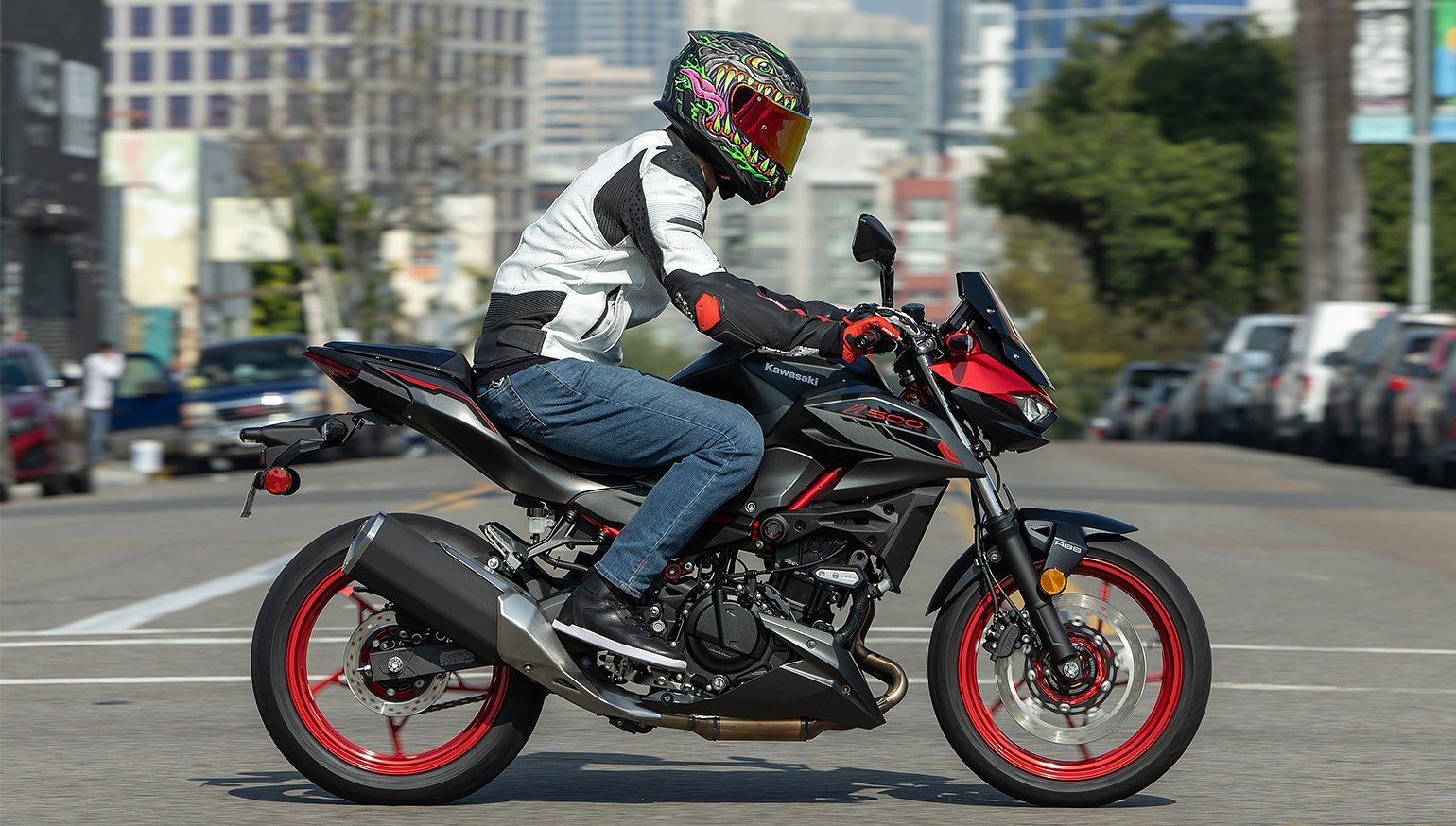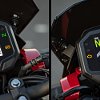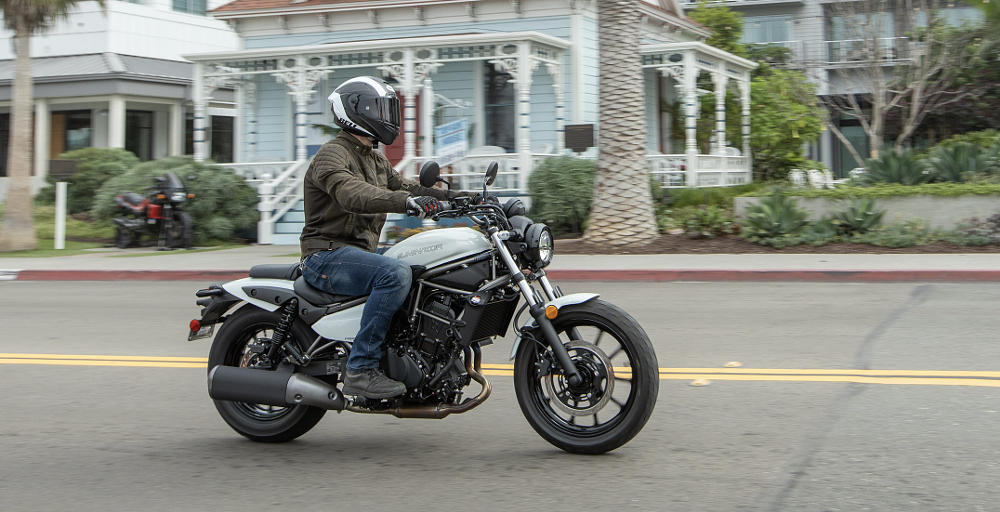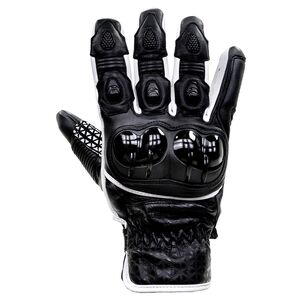“Try to put yourself in the mindset of a beginning rider.”
That was Kawasaki’s request at the 2024 Z500 press launch. I’d normally balk at such instructions, but I’m also a sucker for well presented statistics.
Team Green surveyed customers who purchased the Z500’s predecessor, the Z400, and the results were quite conclusive. According to the data, 60% of the respondents “had one year or less of riding experience.” They were often “in their mid-30s” and learned about the model on YouTube or elsewhere on the internet. That all translates to: Z400 owners are young.
Kawasaki believes the Z500 will appeal to the same crowd, despite the model’s new 451 cc displacement. Now that the littlest of Zs resides in the “500” class (thanks to some generous rounding up), can it still attract new riders? Is it still considered a beginner bike? With a full tank of gas and the right mindset, our 10-rider group went in search of those answers on San Diego’s urban streets and canyon roads.
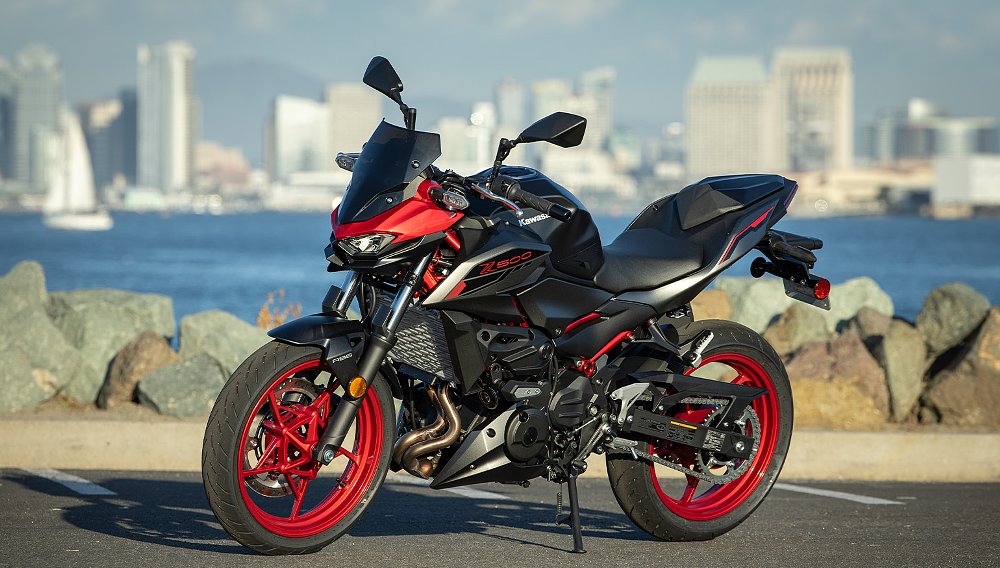
Got a good thing going
The Z400 was successful for several reasons. Its 399 cc parallel twin was lively yet ultra-tractable. Its chassis was basic but competent. Its electronics: simple and uncomplicated. Kawasaki retained many of those characteristics when it developed the new Z500. The engine’s stroke rose from 51.8 mm to 58.6 mm, but its bore remained at 70 mm. That allowed Kawi engineers to maintain the mill’s external footprint, which helped preserve the existing chassis, in turn.
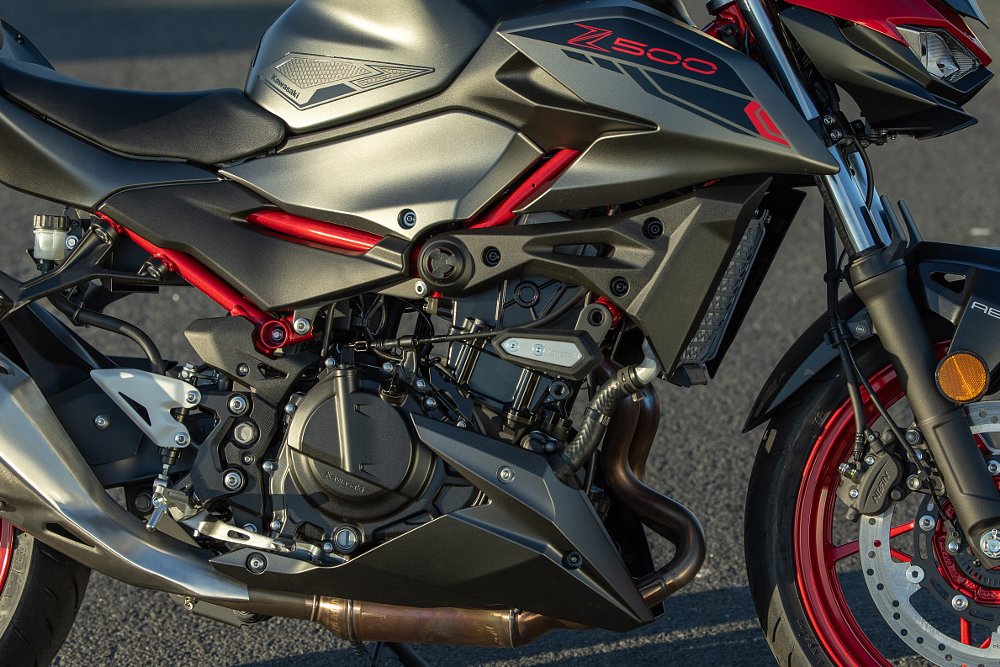
Like the Z400 before it, the Z500 features a steel trellis frame suspended by a Showa front end and a bottom-link Uni-Trak shock. A Nissin system is responsible for braking duties and the five-spoke cast wheels roll on Dunlop’s Sportmax GPR-300F rubber. The Japanese marque did more than just increase capacity and slap on a “Z500” badge, though.
Reshaped bodywork and a streamlined headlamp cluster refine the aggressive Z design. LED headlights complement that facelift while an LED taillight meets modern expectations. The standard model earns a high-contrast LCD instrument panel. The SE trim upgrades to a 4.3-inch TFT display. Both variants benefit from smartphone connectivity but the SE’s USB-C port also offers onboard charging. The two packages share a flatter seat shape and updated mirror stays.
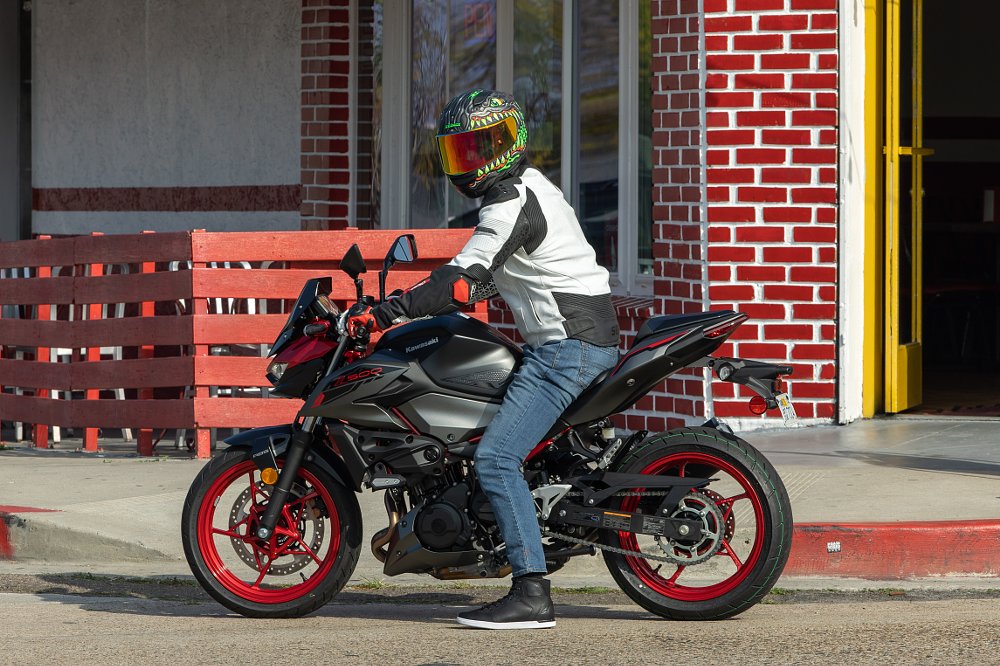
By no means is it a revolutionary revision. It’s more like measured maturation. A little tweak here, a little fix there, all aimed at elevating the wee roadster while conserving its entry-level status. To show just how far the platform has come, Kawi assigned every attendee to an SE unit.
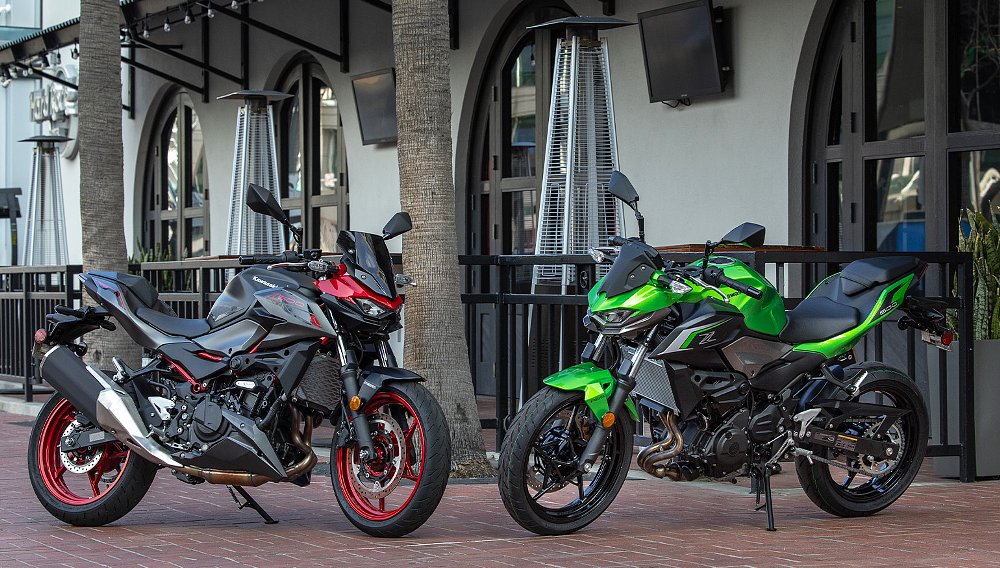
If you want to go far, go together
Kawasaki pitches the Z500 as several things. It’s highway-capable. It zips through twisty backroads. That may very well be true, but many customers will also purchase the model as an urban commuter. The morning leg of our group ride was dedicated to such endeavors, exploring downtown San Diego’s one-way streets and industrial side roads. The Z proved mannerly in such environs, even with its long-stroke twin providing some extra poke around town.
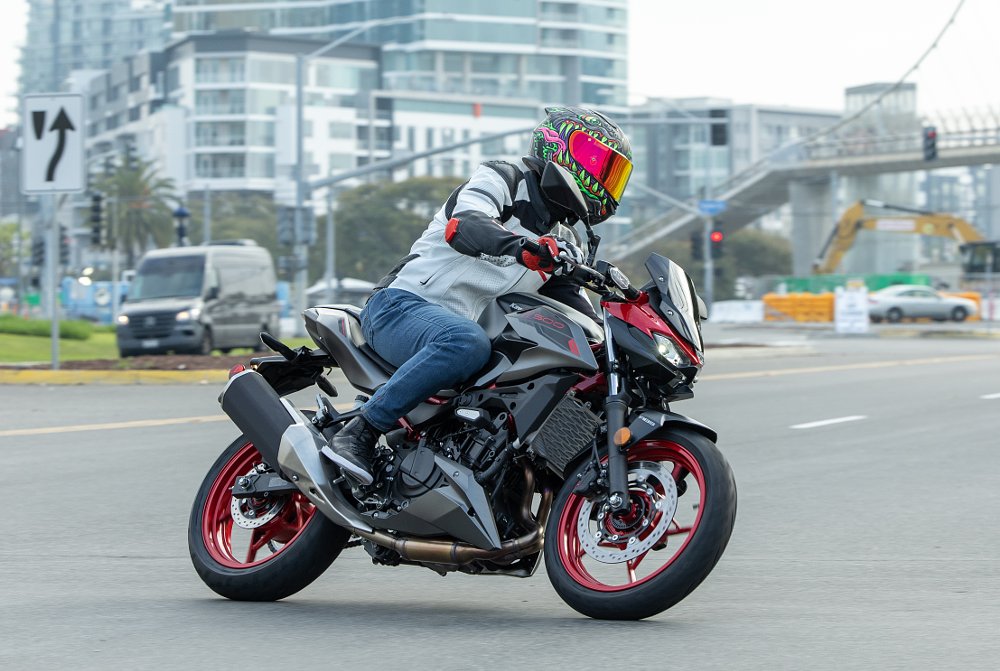
Listed at 51 horsepower (at 10,000 rpm) and 31.7 foot-pounds of torque (at 7,500 rpm), the 451 cc engine nets seven horsepower and 3.7 foot-pounds more than its 399 cc counterpart. More important than peak numbers are the delivery and fueling. The power transmitted to the rear wheel feels in lockstep with the throttle grip position throughout much of the 11,000-rpm rev range. It’s most evident between 4,000 and 8,000 rpm, where a quick throttle blip elicits an immediate reaction from the torquey twin. That doesn’t mean the fueling is faultless.

Throttle action is both laggy and snatchy under 3,000 rpm, with the engine stuttering back up to its happy place in the midrange. Fortunately, the tach needle only descends to those depths in certain situations, like slowing for a red stoplight. Should that light suddenly switch to green, expect abrupt delivery upon throttle reintroduction. It’s a different story away from a stop. By the time I fully released the clutch, the twin was already spinning at 4,000 rpm. I often shifted to second gear by 30 mph, third by 45 mph, and fourth by 60 mph. Revs hovered around 8,000 rpm before each upshift and 6,000 rpm after. Nowhere near 3,000 rpm.
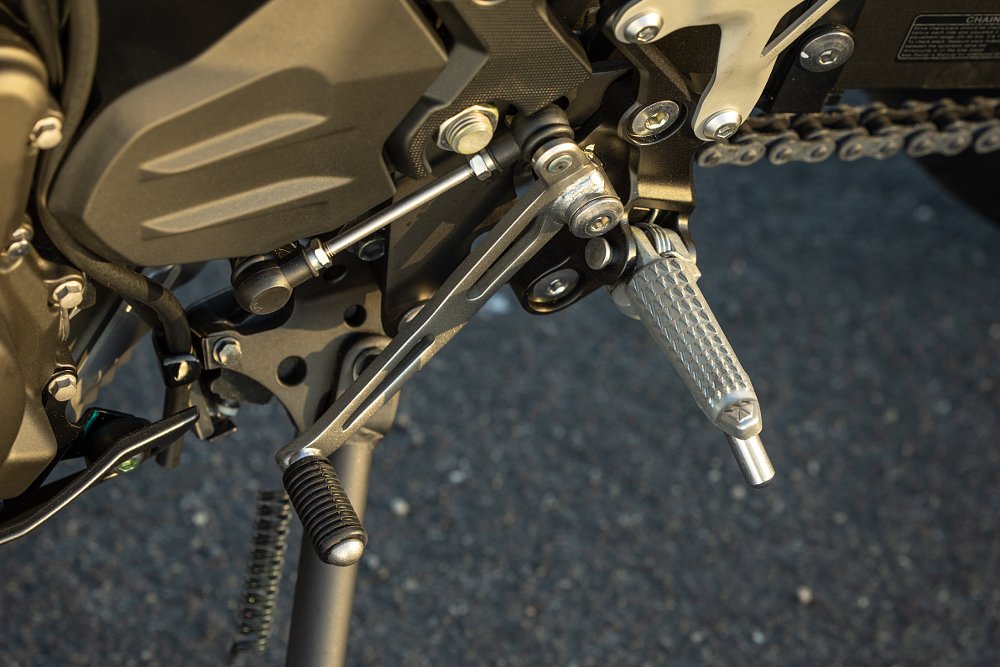
As indicated above, the Z’s short gearing requires a dexterous foot. Even on residential streets, I found myself regularly working up and down the gearbox. I’m relieved to report that all upshifts were smooth, though downshifts from third to second and from second to first were often accompanied by a notchy clunk. With all the shifting required, a quickshifter, which isn't offered as standard or as an accessory, would have gone a long way, too. I know I’m courting controversy with this take. I know purists will argue that “quickshifters are for performance.” But clutchless shifting also benefits newer riders, especially when shortly geared beginner bikes force them to do so much of it. (If it isn’t clear. I. Will. Die. On. This. Hill.)
Quickshifters aren't unheard of in this category, either. KTM currently offers its Quickshifter+ as an add-on to the 390 Duke, a model that costs as much as the $6,299 SE. Of course, the Z500’s cabled throttle eliminates auto-blipper capabilities, but it doesn’t rule out an upshift-only unit. That’s something Kawasaki could have developed by this point in the platform’s evolution. Such a feature would also prove beneficial in the city’s stop-and-go flow, but the Z500’s story extends beyond the concrete jungle.
Escaping the confines of downtown San Diego was just an onramp away, and the little Z worked up to highway speed without so much as a misstep. Don’t expect the overtaking omnipotence of a supersport, but it can easily outrun the minivan barreling down the slow lane. Once the engine catches its stride at 70 mph in sixth gear, the tachometer reads less than 6,500 rpm. Sure, the mirrors (new stays and all) buzz as soon as the Z reaches 5,000 rpm, but the engine sends less vibration the rider’s way.
I won’t overstate it. Vibes are present. They’re perceptible. The twin’s counterbalancer just ensures they never grow too offensive. That seems to be the Z500’s brand: inoffensiveness. It practically permeates every aspect of the bike. The suspension isn’t harsh but it isn’t wallowy. The brakes aren’t soft but they aren’t bitey, either. Even the styling seems less in-your-face than in years past. That’s one way to capture a broad audience. Particularly, when so many beginners comprise that audience.
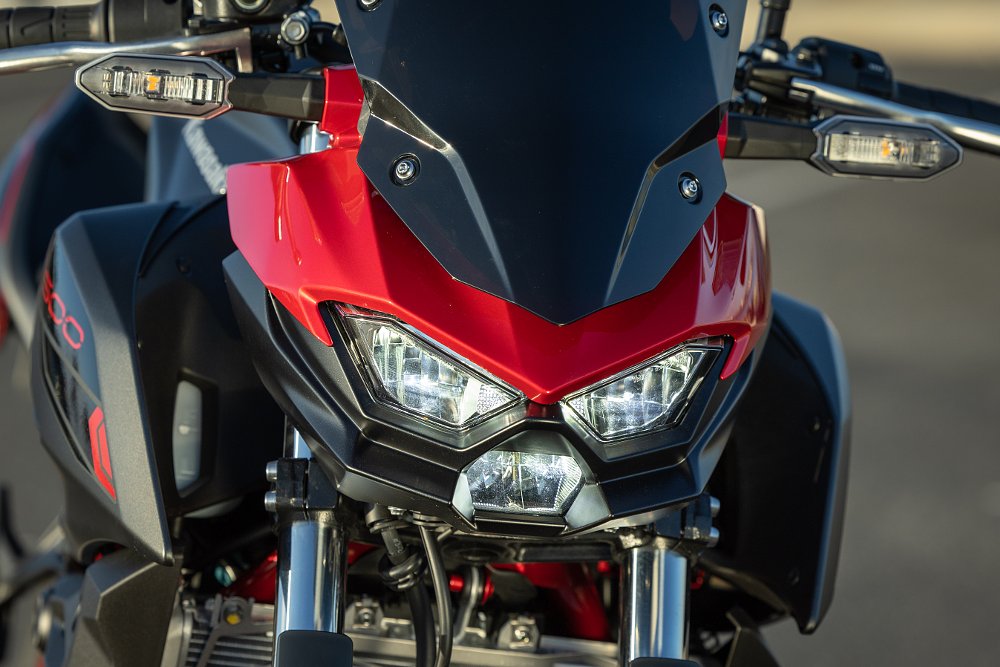
As the route shuttled our group to the hilly outskirts of San Diego, one more thing became clear. The seat’s flatter profile did not agree with my flat backside. Kawasaki even utilized low-rebound padding this time around, but any comfort ran out by day's end. Aside from the saddle, the Z’s ergos are largely agreeable, even if they’re decidedly compact. The rider hardly has to lean toward the bars and the legroom is slightly tight. It’s even more so on the right side of the bike, where my heel often collided with the upswept exhaust.
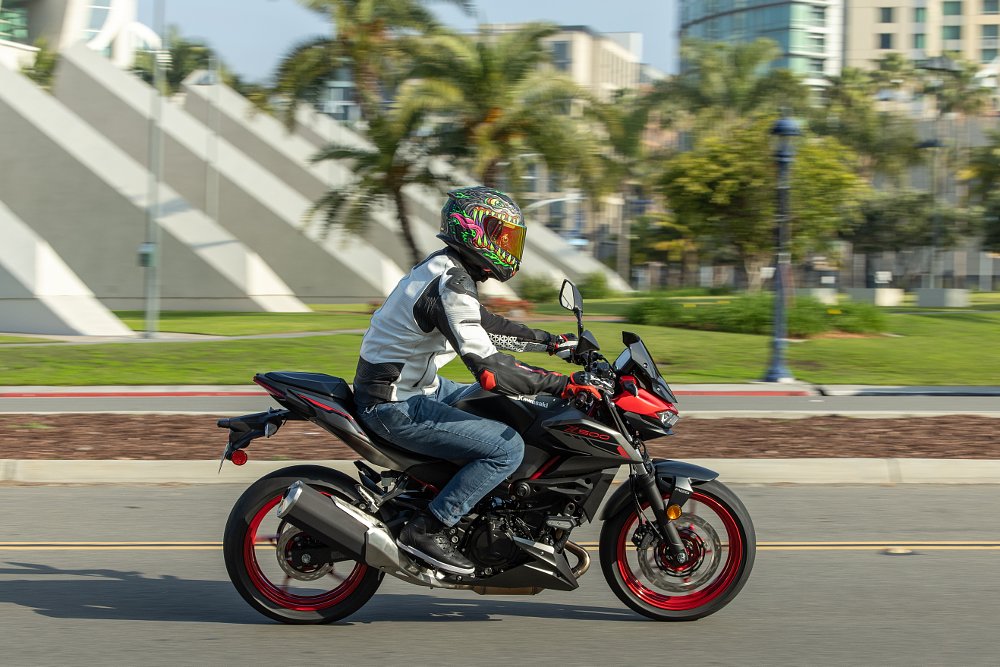
By this point, I’m sure you’re wondering, “Well, how does the thing handle?” Unfortunately, traffic along the test route, and a tepid pace otherwise, only showcased a fraction of the model’s handling potential. Under those circumstances, the baby Z flowed through corners with the utmost of ease. I was more interested in seeing how the 500 responded when pushed, however. A post-event solo ride presented the perfect opportunity to do just that.
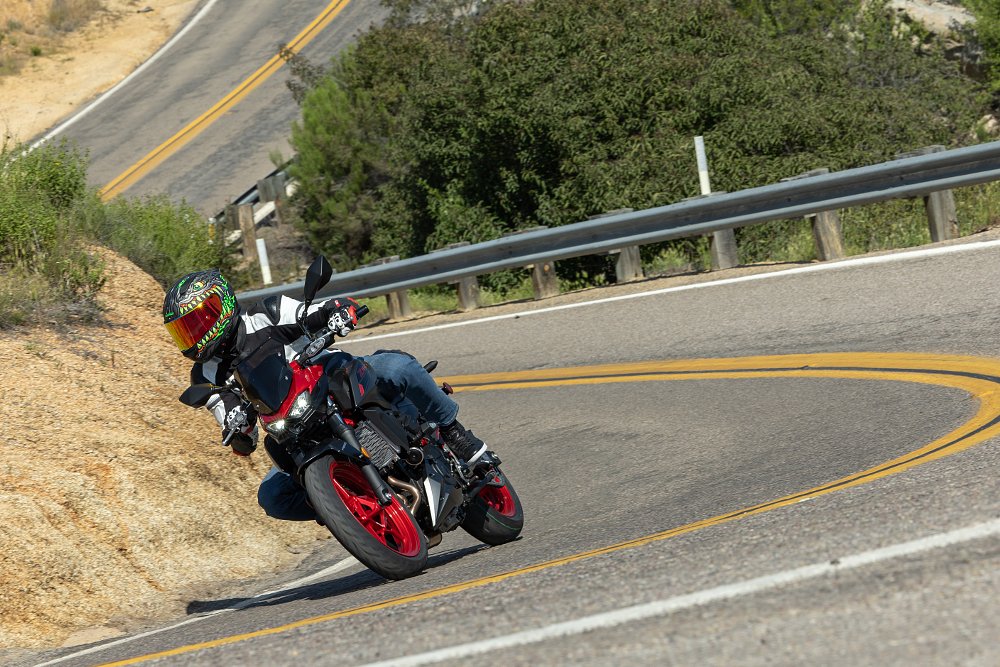
If you want to go fast, go alone
With the Z500 all to myself, I fully intended to expose its weaknesses. I already had the criticisms pre-written in my head. Soft, vague, and spongey were on the tip of my tongue. Boy, was I getting ahead of myself. To my surprise, hammering on the brakes didn't discombobulate the Z. It simply remained composed and dispatched each corner with aplomb, as if saying, “Thank you. Next, please.”
The front end isn’t firmly sprung, by any means. It's doesn't hold a candle to a fully adjustable inverted fork, but it's surprisingly effective, regardless. Despite my best efforts, the Z never got bent out of shape. No radius seemed tight enough for its nimbleness. That somewhat explains why Kawi forewent a chassis update. The little roadster’s corner-conquering demeanor also rubs off on the pilot in no time, but confidence fades as soon as the brakes fade.
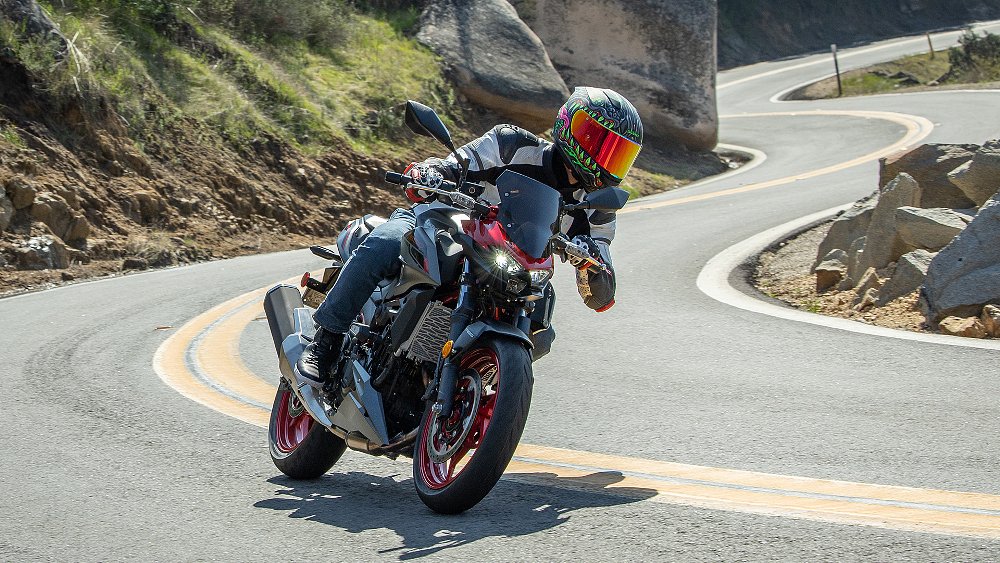
After a relentless onslaught of hairpins and chicanes, the axial master cylinder finally cried Uncle. Without reliable speed-scrubbing abilities, the package feels much less competent. However, the system takes a licking before it stops ticking. Would I have relished an inverted fork and a radial brake setup? Of course. Did the Z surprise me, nonetheless? You betcha. Point being, the Z500 is more than its beginner bike label. Kawasaki understandably markets the model to a younger crowd, but experienced and returning riders should also find it entertaining. I know I did.
Endings and beginnings
During its short, five-year run, the Z400 became a stalwart in the Kawasaki stable. The Z500 has every opportunity to match or exceed that standard. After all, it retains many of the outgoing model’s strengths and tosses in a larger engine for good measure. What’s not to like? No, it won’t blow your toupee off with performance, pin-point precision, or tech beyond ABS. Heck, it won’t even provide wind protection to anything but your pelvis. What it can do is put a smile on your face, and that’s what allows the Z to punch above its 451 cc volume.
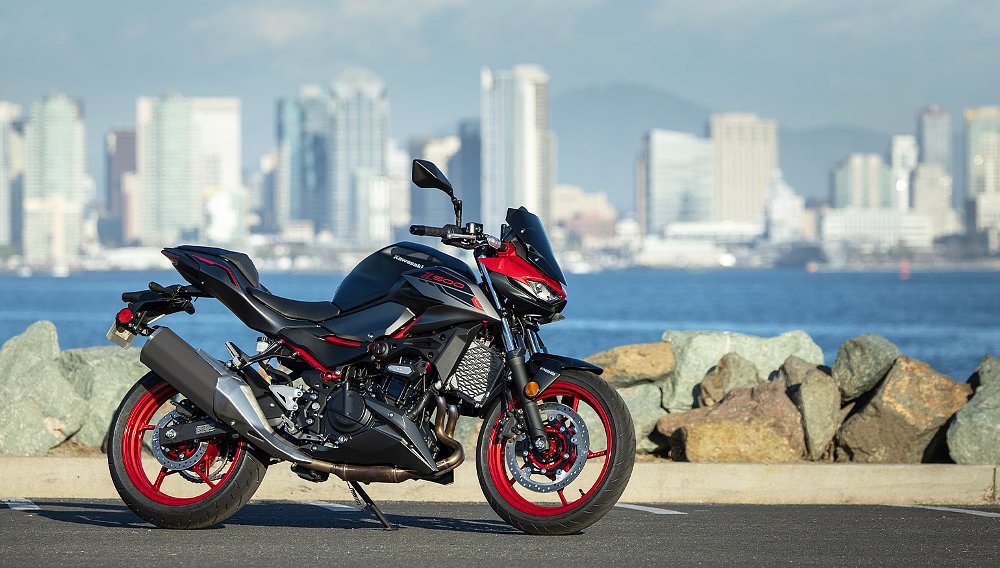
Kawasaki’s research also revealed that Z400 owners cross-shopped the “KTM naked bike” (ahem, the 390 Duke) and Honda’s CB500F, predictably so. But their bike search also extended to larger naked bikes like the Yamaha MT-07 and fellow Z family members. Some customers even considered the Honda Rebel as an option. That’s telling, why? Because the Kawasaki's smallest Z steps into a competitive field better prepared to battle its rivals, both bigger and smaller.
Yes, the Z500 SE will primarily serve new riders, but there’s no reason it can’t be the second bike in an existing rider’s garage. In my humble opinion, that’s the mindset Kawasaki should have for the model.
| 2024 Kawasaki Z500 | |
|---|---|
| Price (MSRP) | $6,299 (SE), $5,599 (base model) |
| Engine | 451 cc, liquid-cooled, eight-valve, parallel twin |
|
Transmission, final drive |
Six-speed, chain |
| Claimed horsepower | 51 @ 10,000 rpm |
| Claimed torque | 31.7 foot-pounds @ 7,500 rpm |
| Frame | Steel trellis |
| Front suspension | 41 mm fork; 4.7 inches of travel |
| Rear suspension | Single shock, adjustable for preload; 5.1 inches of travel |
| Front brake | Nissin single two-piston caliper, 310 mm disc, with ABS |
| Rear brake | Nissin single-piston caliper, 220 mm disc, with ABS |
| Rake, trail | 24.5 degrees, 3.6 inches |
| Wheelbase | 54.1 inches |
| Seat height | 30.9 inches |
| Fuel capacity | 3.7 gallons |
| Tires | Dunlop Sportmax GPR300, 110/70R17 front, 150/60R17 rear |
| Claimed weight | 366 (base model) to 372.6 pounds (SE) |
| Available | Now |
| Warranty | 12 months |
| More info | kawasaki.com |




